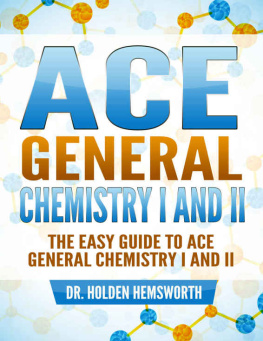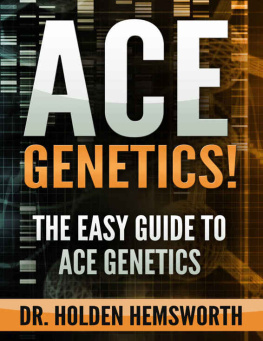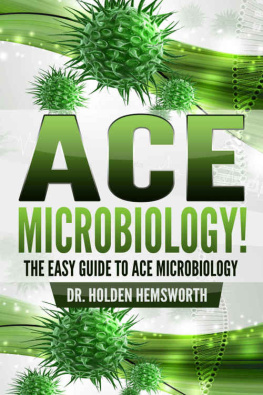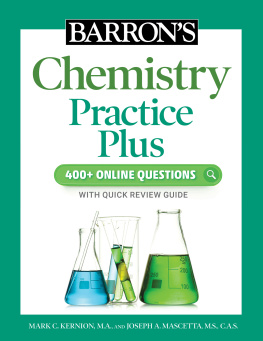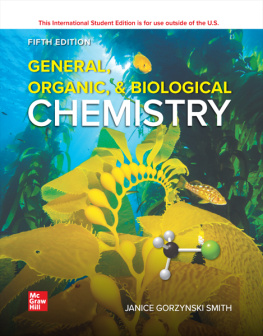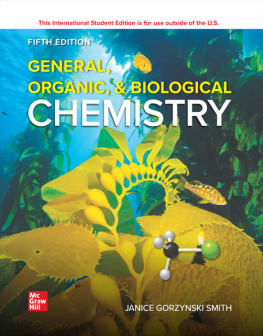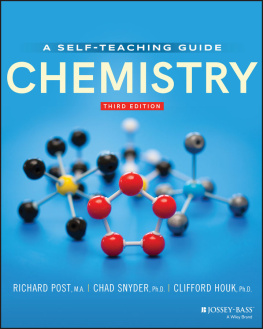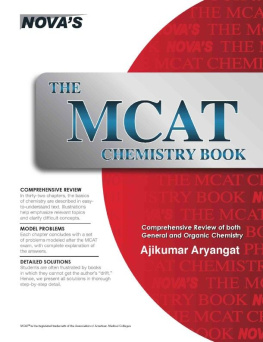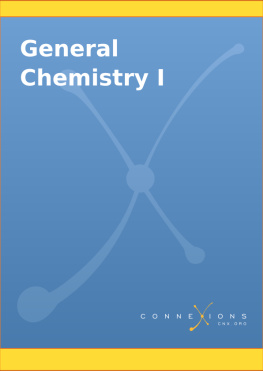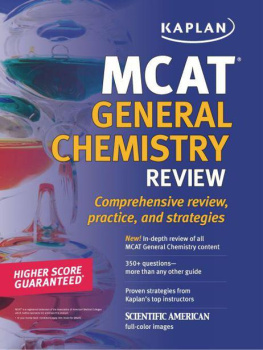Ace General Chemistry I and II
(The Easy Guide to Ace General Chemistry I and II)
By: Dr. Holden Hemsworth
Copyright 2015 by Holden Hemsworth
All rights reserved. No part of this publication may be reproduced, distributed, or transmitted in any form or by any means, including photocopying, recording, or other electronic or mechanical methods, without the prior written permission of the publisher, except in the case of brief quotations embodied in critical reviews and certain other noncommercial uses permitted by copyright law.
Disclaimer
Chemistry, like any field of science, is continuously changing and new information continues to be discovered. The author and publisher have reviewed all information in this book with resources believed to be reliable and accurate and have made every effort to provide information that is up to date and correct at the time of publication. Despite our best efforts we cannot guarantee that the information contained herein is complete or fully accurate due to the possibility of the discovery of contradictory information in the future and any human error on part of the author, publisher, and any other party involved in the production of this work. The author, publisher, and all other parties involved in this work disclaim all responsibility from any errors contained within this work and from any results that arise from the use of this information. Readers are encouraged to check all information in this book with institutional guidelines, other sources, and up to date information.
The information contained in this book is provided for general information purposes only and does not constitute medical, legal or other professional advice on any subject matter. The information author or publisher of this book does not accept any responsibility for any loss which may arise from reliance on information contained within this book or on any associated websites or blogs.
Why I Created This Study Guide
In this book, I try to breakdown the content covered in the typical two semester General Chemistry course in college for easy understanding and to point out the most important subject matter that students are likely to encounter. This book is meant to be a supplemental resource to lecture notes and textbooks to boost your learning and go hand in hand with your studying!
I am committed to providing my readers with books that contain concise and accurate information and I am committed to providing them tremendous value for their time and money.
Best regards,
Dr. Holden Hemsworth
Your reviews greatly help reach more students. If you find this book helpful, please click below to leave a review on Amazon or to share the book on Facebook. Nothing helps more than a few kind words.


Table of Contents
What is Chemistry?
Chemistry is the branch of science concerned with the understanding of matter; the substances it is composed of and their properties, as well as the ways in which they interact and change to form new substances.
Matter
Matter is anything that has mass and takes up space. Mass is the amount of matter an object contains; a way of quantifying matter. Matter exists in three physical states.
- Solid matter with fixed shape and volume (rigid)
- Liquid matter with a fixed volume but indefinite shape
- Takes on the shape of the container it is in
- Gas matter without a fixed shape or volume
- Conforms to the volume and shape of its container
Physical and Chemical Properties
- Physical property characteristics that can be measured and observed without changing the chemical makeup of the substance
- Examples: color, melting point, boiling point, density, etc.
- Physical change a substance changes its physical appearance but does not change identity
- Changes in state (e.g., liquid to gas, solid to liquid) are all physical changes
- Chemical property any property that becomes evident during a chemical reaction
- Examples: pH, corrosiveness, etc.
- Chemical change (aka chemical reactions) a substance is transformed into a chemically different substance
Mixtures
Mixtures are combinations of two or more substances in which each substance keeps its chemical identity. Mixtures can be separated into two or more substances.
- Heterogenous mixtures mixture that is divided into different regions of appearance and properties
- Results from components not being distributed uniformly
- Homogenous mixtures mixture that is uniform throughout without any visible separations
- Solutions are homogenous mixtures
- Where a solid (the solute) is dissolved in a liquid (the solvent)
Elements and Compounds
Pure substances have definite and consistent composition and are composed of elements or compounds.
- Element - substance that cant be broken down into other substances by chemical means
- Compound substance formed from two or more chemical elements that are chemically bonded together
- Law of definite proportions
- Pure compounds always contain exactly the same proportions of elements by mass
Energy
Energy is the capacity to do wok.
- Kinetic energy energy possessed by an object due to its motion
- Potential energy energy stored in matter because of its position or location
- Something suspended in the air has higher potential energy than something sitting on the ground
- Total Energy = potential energy + kinetic energy
- Lower energy states are more stable in nature
- Law of conservation of energy
- Energy cant be created or destroyedbut it can be transformed
- Example: potential energy can be converted to kinetic energy
- Energy is always conserved
Scientific Method
The scientific method is a technique for investigation that is used to answer scientific questions.
- Hypothesis - a proposed explanation made on observations or limited evidence that serves as the starting point for further investigation
- Theory explanation of general principles of a phenomena that has been repeatedly tested and observed
- Fact indisputable truth
- Steps in scientific approach
- Observations, Hypothesis, Experiment, Development of a model or theory, Further experimentation
Measurements
Measured quantities consist of a number and a unit.
- Units are standardized in the form of the International System called SI units
- Units have associated prefixes to make them easier to use and reports

- Conversion factors a mathematical multiplier used to convert a quantity expressed in one set of units into an equivalent quantity expressed in
- Example: 1 yard = 3 feet (10 yard = 30 feet)
Scientific Notation
- Scientific notation is a way of handling very large or very small numbers

